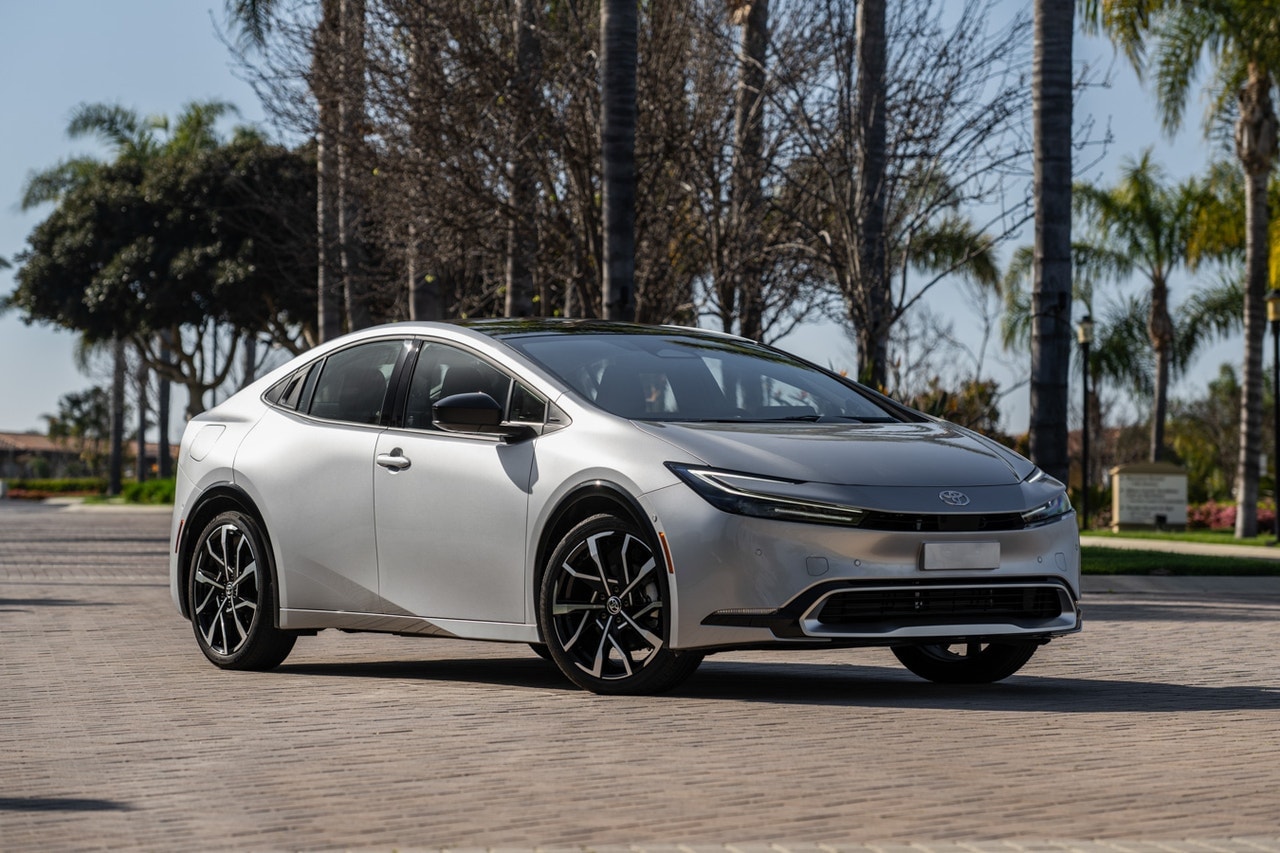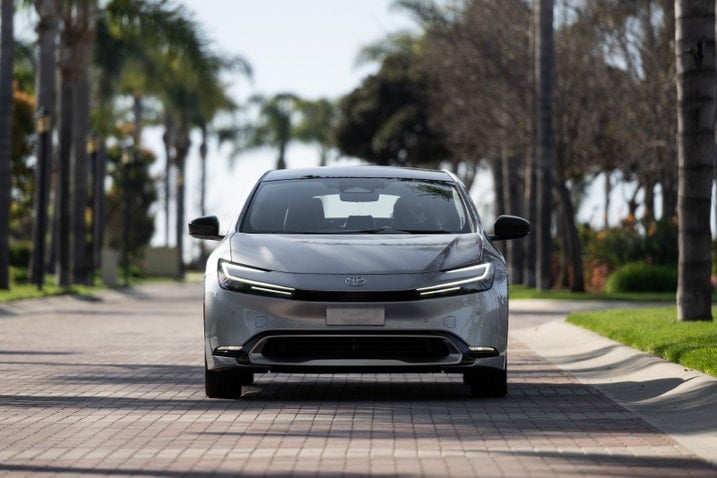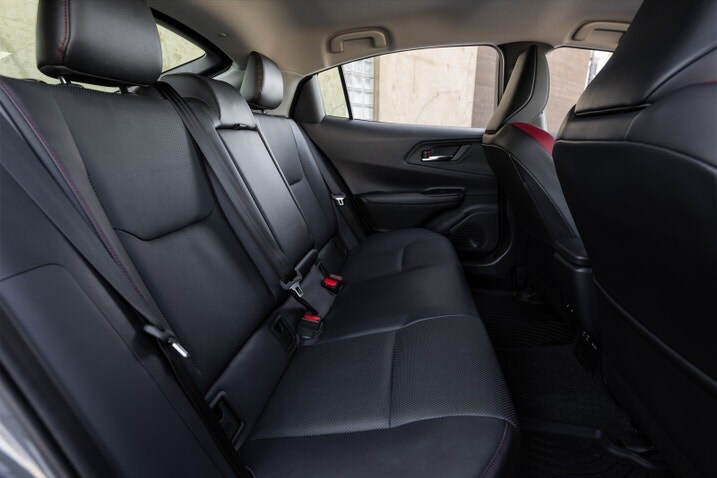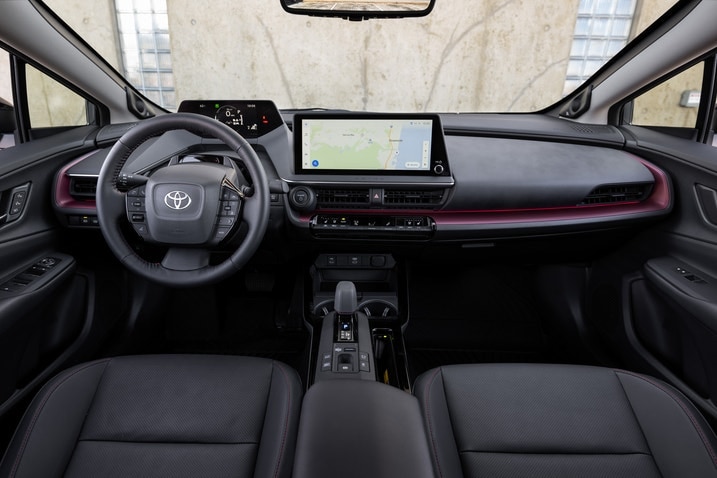- The Prius Prime has been fully redesigned.
- It offers up to 44 miles of electric range, about 50% more than the previous model.
- Estimated 0-60 mph time of 6.6 seconds makes it the quickest Prius ever.
Driven: 2023 Toyota Prius Prime Puts the EV in PHEV
The Prius Prime offers a near EV driving experience, without the range anxiety
No one could have ever accused the Prius of being anything other than efficient. It's capable of achieving over 50 mpg without really trying, so it was with some surprise when Toyota introduced the Prius Prime, a plug-in hybrid variant of the standard Prius, back in 2017. Thanks to its somewhat low but not insignificant all-electric range, the Prime allowed buyers to try out the whole EV thing without fully committing to an electric vehicle.
For 2023, the Prius Prime gets a full redesign (along with the standard Prius), with an eye to not only improving the king of efficient cars but to helping the Prius stay relevant as full EVs become more popular. The new Prius has a stiffer structure for better handling and is slightly larger, longer and lower than the outgoing model. It's also a whole lot more powerful, thanks to a larger internal combustion engine as well as a new battery pack, which Toyota says adds nearly 50% to the Prime's EV-only range.
But the exterior styling will likely get most of the early attention as it replaces the "who did this to you?" designs that adorned Priuses of old with something exponentially more stylish. It's the same for the inside as well, which gets a cabin with a much more traditional arrangement. Oh, and did we mention it comes with an available solar roof?
What's under the Prius Prime's hood?
It's not every day you get to announce that a new generation of a vehicle has gained nearly 100 horsepower, but here we are. With combined output between the engine and motor of only 121 horsepower, the last-generation Prius Prime didn't make a lot to begin with. But the 2023 Prime gets a larger 2.0-liter four-cylinder (up from 1.8 liters), as well as a larger 13.6-kWh battery pack.
Combined output is now 220 horsepower. The electric motor has gotten a gigantic boost in output: It makes 161 horsepower on its own and that's more than the last Prime made total. That power gets you a Toyota quoted 0-60 mph figure of 6.6 seconds for the 2023 Prime. While that's not exactly blazing by modern standards, it might as well be light speed for a car that previously couldn't hit 60 in under 9 seconds unless you pushed it out of a plane.
What's the Prius Prime's electric range and mpg?
The Prime's main mission is efficiency. The new model, thanks to a larger battery pack, has an increase of nearly 50% in electric-only range. The previous model could travel around 25 miles on purely battery power; the new Prime can travel an estimated 44 miles (SE models) or 39 miles (XSE) on a full charge. That's a significant improvement and only adds to the attractiveness of the Prime over the standard Prius
Toyota says the Prime will get up to 52 mpg in combined city/highway driving for the SE trim, or 48 mpg combined for the XSE and XSE Premium trims. That means the Prime gets about 5 mpg less than the regular Prius but is still an outstanding fuel-sipper, especially once you factor in its all-electric range. It's also better than what could be considered the Prime's closest competitor, the Kia Niro Plug-in Hybrid (48 mpg and 33 miles of range).
Charging the Prius Prime's battery pack from zero to 100% will take about four hours when using a 240-volt power source, Toyota says.
How does the Prius Prime drive?
The Prius Prime shares many of the same characteristics as the regular hybrid, such as a smoother ride quality, sharpened steering, and a bit of a fun character from behind the wheel. The stock tires don't provide much grip, which is surely for efficiency reasons, but I imagine the Prime would be a pretty fun car to toss around corners if you put some grippier tires on it.
Similarly impressive is how much the Prime relies on electric power. When it's in EV mode, it feels a lot like driving a purely electric vehicle. Acceleration is brisk up to around 45 mph, and you can get on the highway or pass someone without even a hint of the gas motor. While in EV mode, you can also floor the throttle and the gas engine won't turn on, so you don't have to baby it around to keep from burning gas like you do in most other PHEVs. Bumping the electric motor's power up so much was absolutely the right call and it makes the Prius Prime feel better all around.
How comfortable is the Prius Prime?
The suspension has been stiffened to provide the car's improved handling, but the Prius Prime is still comfortable and quiet on the road. The front seats are supportive but don't have much bolstering. Some drivers might desire more of a bucket shape to help keep them in place around turns.
The back seat is less comfortable. The low cut of the roof for styling purposes has made getting in and out more difficult for taller passengers. That same shape has also cut into rear headroom, so if you're more than 6 feet tall you should make a pitch for one of the front seats whenever possible.
How's the Prius Prime's interior?
The outside of the Prius Prime received a radical transformation and the interior, thankfully, hasn't been left alone either. Drawing elements from Toyota's fully electric bZ4X, the Prius Prime has lost its questionable use of a central-mounted instrument panel in favor of a more traditional display directly behind the steering wheel. Unfortunately, that display is hard to see as much it is blocked by said steering wheel and it tries to show too much information in a small space so it feels overwhelming to the driver.
The rest of the dashboard has received a similarly more traditional layout and features a climate control with physical buttons and relocates the gear selector to the center console, although it still features the Prius' unique shift pattern. Thanks to the Prius Prime's low hood and expansive windshield and side windows, visibility is excellent to the front and sides. Rear visibility, however, is not as ideal. The split liftgate has been removed, leaving less of a window to see through via the rearview mirror. A digital camera display in the rearview mirror is thankfully available as an option.
An 8-inch multimedia touchscreen is standard and a larger 12.3-inch screen is available. For comparison, the previous generation's screen options were slightly smaller, at 7 inches and 11.6 inches. Synthetic leather upholstery (Toyota calls it SofTex) is available, as are heated and ventilated seats, a wireless phone charger, a digital key, a JBL audio system and a fixed-glass panoramic sunroof.
How's the Prius Prime's tech?
The tech in the Prius Prime also gets a generous boost thanks to a long list of standard and available advanced driver aids. Every Prius Prime comes with Toyota's Safety Sense 3.0 suite of updated safety systems, which includes automatic emergency braking, lane departure warning, adaptive cruise control, automatic high beams and something Toyota calls Proactive Driving Assist. The system uses the Prime's cameras and radar to anticipate driver inputs and will gently brake the Prime into curves and help maintain a safe distance between you and the vehicle in front of you. It will also gently steer the Prime to help avoid obstacles. Based on my initial drive, I found this system to be pretty helpful and mostly unobtrusive.
Traffic Jam Assist is another standard feature on the Prime and combines adaptive cruise control and lane keeping assistance to provide a low-speed hands-free driving experience in, you guessed it, traffic jams. This is the first Toyota to use this system, which debuted previously in Lexus vehicles. The system has quite a few specific operating conditions — among them, it only activates under 25 mph and uses a camera to monitor the eyes of the driver, making sure they're on the road ahead and not buried in James Joyce's Ulysses, or whatever people seem to read when they're mired in rush-hour traffic.
It works well in those conditions, centering the car well in its lane. If another car merges sharply in front of you, it will ask you to take control of the steering again so keep your hands ready. There is one major annoyance: The sensor to watch your eyes is mounted atop the steering column, so if you like to drive with a hand on top of the wheel the car constantly alerts you to sit up since it can't see your face.
Another trick piece of tech is the available solar roof. It allows for onboard charging of the Prime's battery when parked and can deliver power to other accessories, like the phone charging and air conditioning, when the Prime is driving around. The only trade-off is the loss of the dual-pane glass roof when you select this option.
Edmunds says
The Prius Prime's more powerful electric motor and larger battery improve range and performance in a single stroke. The ergonomic issues that we have with the new Prius overall remain, but it's undeniable that this makeover has paid dividends.











 by
by